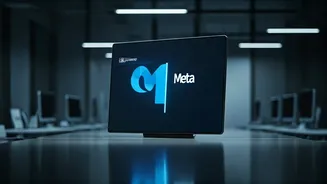From Science to Marketing
The transition from a science background into the realm of digital marketing signifies a notable shift, but it also reflects a common trend in today's
dynamic job market. This transition often involves leveraging transferable skills. A science background may seem unrelated, but in reality, it equips individuals with critical thinking, analytical abilities, and a meticulous approach—all crucial in digital marketing. Understanding data, interpreting results, and experimenting with strategies are skills applicable in both disciplines. Thus, making this career shift requires adaptability and a willingness to learn new technologies and strategies. This change is evidence of the evolution in career paths.
Early Career Beginnings
The journey starts with early practical experience, with internships. The experience gained at startups and even large corporations like Samsung, provides a launchpad for future career endeavors. Internships allow individuals to test theories and learn the practical side of their chosen fields. They provide opportunities to network, develop essential skills, and understand workplace dynamics. These experiences are fundamental in shaping professional identities. By participating in different projects and roles during these initial experiences, one can refine their career goals and begin to build a professional network. This early exposure helps in gaining a competitive edge as the foundation for a professional trajectory is built.
Combining Interests: Banking + Coding
The convergence of banking and coding represents a unique synergy, particularly for those passionate about both fields. This blend of interests can lead to an internship that marries financial principles with technological prowess, offering a distinctive career path. Positions within FinTech companies exemplify this combination, merging financial services with software development. Such roles often involve creating innovative solutions, automating processes, and enhancing user experiences within financial platforms. This dual interest enables professionals to analyze financial data, develop algorithms, and contribute to cutting-edge projects. Thus, finding intersections between seemingly disparate areas is an advantageous strategy for career exploration.
Engineering to Design
Making a career in design, even as an engineering student, demonstrates the growing importance of versatility and creative adaptation. This transition typically involves transferring technical skills into design methodologies, utilizing problem-solving skills learned through engineering to craft user-centered designs. Engineers possess a deep understanding of structure and functionality, which is essential to good design. Design roles can encompass various aspects, from user interface and user experience design to visual communication and product design. Developing strong design skills requires learning specific design software, understanding design principles, and building a portfolio that showcases projects. This shift illustrates the expanding need for interdisciplinary knowledge and skills.













